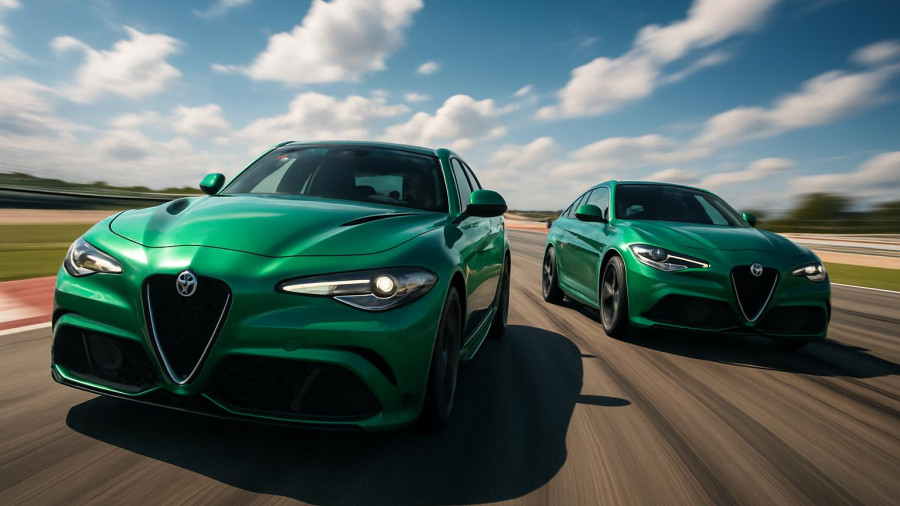
Alfa Romeo's Persistence: Keeping the Giulia and Stelvio Alive
As Alfa Romeo grapples with an uncertain future, the brand has made the strategic decision to extend the life of its beloved Giulia sedan and Stelvio SUV until 2027. This decision comes amid delays in the development of their all-electric successors, as reports indicate that Stellantis, Alfa Romeo's parent company, is recalibrating plans for hybrid powertrains to align with evolving market demands and stringent emissions regulations. According to Jules Tilstone, Alfa's U.K. boss, the continuing popularity of internal combustion engine (ICE) vehicles in the U.K. market influenced the brand's decision to stick with traditional gasoline options for the present. "People are looking for fun-to-drive performance ICE cars, and the Giulia and Stelvio offer that in spades," he stated.
The Return of the Quadrifoglio V6
In an effort to boost its appeal, Alfa Romeo confirmed the return of the Quadrifoglio V6 engine for both models. This powerful engine, rated at 505 horsepower, will allow the aging Giulia and Stelvio to stand against newer competitors. While the brand aims to maintain competitive performance levels, the absence of hybrid models raises concerns, especially with rivals like BMW preparing to introduce mild-hybrid options that enhance both performance and fuel efficiency. The upcoming BMW M3 is expected to exceed 500 horsepower, showcasing the challenges Alfa Romeo faces in not just retaining but expanding its market share.
Current Sales Challenges
Alfa Romeo’s struggles in the American market underline the urgency of its situation. Last year, the brand sold only 8,865 units in the U.S., with the Stelvio leading sales figures but still facing a significant drop. Low sales figures, inventory issues, and recalls over rust problems exacerbate the brand’s woes. As Tilstone noted, the Giulia is still regarded as a "timeless D-segment saloon," but against the backdrop of substantial competition and a shifting automotive landscape, it remains to be seen how long that legacy can hold out.
The Road Ahead: A Fork in the Path
As 2027 approaches, Alfa Romeo finds itself at a critical juncture—one that could determine its trajectory in an ever-competitive automotive sector. The modern market is gravitating increasingly towards electrification, and the upcoming models will need to leverage their historical allure while adapting to new consumer expectations for hybrid and electric offerings. The evolving automotive landscape renders this forthcoming launch crucial not just for Alfa's lineup but potentially for the brand's very survival.
Can Alfa Romeo Compete?
The sustainability of the Giulia and Stelvio may hinge on a solid strategy that encompasses both modern technology and the brand's storied reputation for performance. With competitors like the Porsche Macan EV and the forthcoming electric options from luxury brands, Alfa Romeo must not only retain its passionate driving dynamics but also resonate with eco-conscious consumers. The question stands: can an iconic Italian brand that has historically relied on the emotional connection to its vehicles pivot successfully to a hybrid and electric future?
As automotive enthusiasts, potential buyers, and investors keep a close eye on these developments, the breath of fresh air from the Quadrifoglio V6 is a promising signal but not a guaranteed revival. The upcoming years will reveal whether the combination of nostalgia and performance can power Alfa Romeo's next chapter.
 Add Row
Add Row  Add
Add 




Write A Comment